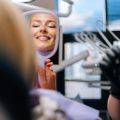1. Introduction to Minimally Invasive Aesthetics
Minimally invasive aesthetic procedures have taken centre stage in the UK’s beauty and wellness sector, marking a significant shift in how people approach self-enhancement. Unlike traditional surgical interventions, these treatments—ranging from dermal fillers and anti-wrinkle injections to laser therapies and non-surgical body contouring—are designed to deliver effective results with minimal downtime, discomfort, or risk. The growing appeal of such procedures lies in their convenience and natural-looking outcomes, which resonate strongly with British sensibilities that often favour subtlety over excess. In recent years, the UK has seen a remarkable rise in demand for minimally invasive options as more individuals seek ways to maintain a refreshed appearance without committing to the permanence or invasiveness of surgery. This trend is not only driven by advances in medical technology but also by cultural shifts towards preventative care and personal well-being. As we move into 2025, these procedures are shaping the future of aesthetics across the country, reflecting both evolving societal values and innovative clinical practices.
2. The UK’s Unique Influence on Global Aesthetic Trends
The United Kingdom holds a distinctive position in the global aesthetic landscape, with its culture, values, and regulatory environment playing crucial roles in shaping the evolution of minimally invasive procedures. British sensibilities—often characterised by subtlety, understatement, and a respect for natural beauty—have encouraged practitioners and patients alike to favour enhancements that preserve authenticity rather than create dramatic changes. This approach contrasts with more overt trends seen in other regions, such as the US or parts of Asia.
British Culture: Subtlety Over Showiness
One of the defining traits of British aesthetics is a preference for results that are refined and discreet. The typical patient in the UK seeks treatments that enhance their features while maintaining a “done but not overdone” appearance. This has led to an increase in demand for advanced injectables, gentle skin rejuvenation technologies, and non-surgical facial contouring techniques.
UK Sensibilities vs International Preferences
| UK | USA | Asia | |
|---|---|---|---|
| Treatment Approach | Subtle enhancement | Dramatic transformation | Skin whitening & V-line shaping |
| Popular Procedures | Micro-Botox, Profhilo, Tear Trough Filler | Lip Fillers, Jaw Contouring, Laser Resurfacing | Aquagold Facial, Thread Lifts, BB Glow |
| Cultural Values | Natural look, privacy valued | Celebrity influence, bold changes | Youthful glow, sculpted features |
The Role of Regulation in Shaping Practice
The UK also stands out for its robust regulatory framework governing aesthetic medicine. Recent legislative efforts by bodies such as the General Medical Council (GMC) and the Care Quality Commission (CQC) have introduced stricter guidelines on training requirements and advertising standards. These measures are designed to ensure patient safety and promote ethical practice—factors which contribute to a more trustworthy environment for both providers and clients.
Key Regulatory Developments Impacting Aesthetic Procedures:
- Mandatory licensing for non-surgical cosmetic procedures (expected rollout by 2025)
- Tighter restrictions on promotional offers and social media advertising targeting under-18s
- Standardised consent processes and enhanced aftercare protocols across clinics nationwide
This unique blend of cultural discernment and rigorous oversight ensures that the UK’s influence on global aesthetic trends continues to grow stronger, setting benchmarks for safety, sophistication, and integrity in minimally invasive treatments.

3. Popular Procedures in 2025: What’s Hot in the UK
In 2025, the UK has firmly established itself at the forefront of minimally invasive aesthetic procedures, with both subtlety and sophistication defining local preferences. One of the most noteworthy trends is the growing popularity of advanced injectable treatments. While anti-wrinkle injections and dermal fillers remain staples, British clients are increasingly opting for bespoke solutions—such as micro-dosing techniques and tailored filler blends—to achieve natural-looking enhancements without the risk of an ‘overdone’ appearance. The focus is on maintaining character rather than erasing it, reflecting a distinctly British appreciation for authenticity.
Another area witnessing significant innovation is non-surgical skin tightening. Treatments like high-intensity focused ultrasound (HIFU) and radiofrequency microneedling have become household names among those seeking firmer, more youthful skin without downtime. These technologies are favoured for their subtle yet noticeable results, aligning well with the understated elegance often preferred by UK residents. Clinics are also reporting a surge in demand for hybrid facial therapies—combinations of laser resurfacing, LED light therapy, and gentle peels—tailored to address unique skin concerns while minimising disruption to daily routines.
The shift towards less invasive body contouring solutions is equally remarkable. Cryolipolysis (fat freezing) and new-generation body sculpting devices offer a non-surgical alternative to traditional liposuction, fitting seamlessly into busy urban lifestyles. London, Manchester, and Edinburgh clinics note that clients value treatments requiring minimal recovery time, allowing them to return to work or social commitments quickly—a practical consideration deeply rooted in British culture.
Emerging innovations specific to the UK market include eco-friendly skincare injectables and vegan-friendly treatment options. Driven by an increasing awareness of sustainability and ethical consumption, many practitioners now source products that align with these values. This intersection of technology and conscientious choice reflects broader societal shifts across Britain, setting local clinics apart in an increasingly competitive global industry.
4. Safety, Regulation, and the NHS Perspective
In recent years, the surge in minimally invasive aesthetic procedures across the UK has prompted an urgent and thoughtful response from regulatory bodies and healthcare institutions alike. The British approach to safety and regulation is both rigorous and adaptive, reflecting a collective national ethos that prioritises patient welfare, transparency, and evidence-based practice. Notably, the NHS has become increasingly vocal about setting clear boundaries between medically necessary treatments and elective aesthetic enhancements, reinforcing public trust by advocating for robust safety standards.
The Regulatory Landscape: A Distinctly British Approach
The UK’s regulatory environment is shaped by a combination of government directives, professional oversight, and industry self-regulation. Organisations such as the Care Quality Commission (CQC), General Medical Council (GMC), and Joint Council for Cosmetic Practitioners (JCCP) have taken centre stage in establishing guidelines that ensure only qualified professionals perform these procedures. Moreover, the Advertising Standards Authority (ASA) plays a critical role in monitoring claims made by clinics and practitioners to prevent misleading promotions.
| Regulatory Body | Role in Aesthetic Procedures |
|---|---|
| CQC | Inspects and rates clinics offering surgical & non-surgical treatments |
| GMC | Sets standards for doctors performing cosmetic work |
| JCCP | Registers practitioners; provides code of conduct & training frameworks |
| ASA | Monitors advertising to ensure it is not misleading or irresponsible |
NHS Guidance: Setting the Gold Standard for Public Trust
The NHS has consistently emphasised informed consent, realistic expectations, and psychological assessment prior to any aesthetic intervention. This uniquely British safeguard ensures that individuals are making choices with a clear understanding of risks and benefits—an approach echoed in NHS-endorsed patient leaflets, online resources, and GP consultations. The NHS also serves as a backstop for complications arising from private procedures, creating an implicit safety net but also fuelling ongoing discussions about resource allocation.
Public Confidence through Regulation and Transparency
The interplay between effective regulation and NHS guidance underpins the growing confidence among Britons seeking minimally invasive treatments. The focus on practitioner qualifications, clinic inspections, ethical marketing, and aftercare protocols elevates the UK’s reputation as a global leader in safe aesthetics. As we look towards 2025, these measures will remain central in shaping trends—ensuring that innovation does not outpace accountability.
5. Demographic Shifts: Who’s Seeking Treatment & Why
The landscape of aesthetic treatments in the UK is undergoing a notable transformation as minimally invasive procedures become increasingly mainstream. A closer look at demographic trends reveals evolving attitudes across age groups, genders, and regions—each demonstrating a distinctly British preference for subtle, natural-looking enhancements.
Generational Perspectives: Beyond Youthful Aspirations
Historically, cosmetic interventions were associated with younger individuals pursuing wrinkle reduction or preventative measures. However, 2025 sees a significant broadening of this demographic. Millennials and Gen Z continue to embrace treatments such as dermal fillers and laser therapies, but there is a marked increase in uptake among those in their forties, fifties, and beyond. Older adults are choosing procedures not only to look refreshed but to feel more confident in an age-positive manner, aligning with Britain’s growing cultural emphasis on authenticity and self-acceptance.
Gender Dynamics: Redefining Masculinity and Femininity
Aesthetic medicine was once perceived as the preserve of women, but changing social attitudes are dissolving these boundaries. In the UK, men now represent a rapidly expanding segment of patients seeking minimally invasive solutions—from anti-wrinkle injections to subtle jawline sculpting. The motivation often lies in maintaining a competitive edge at work or simply desiring to look ‘well-rested’ rather than dramatically altered. This shift reflects the British ethos: prioritising understated results that enhance rather than transform.
Regional Nuances: North-South Divide and Urban-Rural Trends
The demand for non-surgical treatments spans the breadth of the UK, yet regional differences persist. Metropolitan hubs like London and Manchester lead in both treatment variety and frequency, driven by higher exposure to global beauty standards and professional networks where appearance can play a key role. Nevertheless, smaller towns and rural communities are catching up as local clinics adopt less invasive technologies. Across all regions, there is a shared preference for techniques that deliver incremental improvements—a nod to the traditional British appreciation for restraint and natural beauty.
British Attitude: Subtlety over Showmanship
Across demographics, one constant emerges: the desire for results that whisper rather than shout. Whether smoothing fine lines or enhancing facial contours, UK patients consistently request outcomes that blend seamlessly into their everyday lives. Practitioners report that ‘looking like yourself—only fresher’ has become the defining mantra. This approach distinguishes British aesthetic trends from more conspicuous transformations elsewhere and underscores the country’s influential role in setting global standards for natural-looking rejuvenation.
6. The Future Outlook: Technology, Ethics, and Sustainability
As we look ahead to the future of minimally invasive procedures in the UK, several critical factors are shaping the direction of the industry. The rapid pace of technological innovation continues to redefine what is possible, with advanced robotics, AI-driven diagnostics, and personalised treatment planning becoming increasingly common in clinics across London, Manchester, and beyond. British practitioners are quick to adopt these tools, not only for their precision but also for their ability to enhance patient safety and outcomes.
Embracing Cutting-Edge Technologies
Innovations such as non-surgical skin tightening devices, regenerative medicine techniques, and next-generation dermal fillers are gaining traction. These advancements promise less downtime and more natural results, aligning perfectly with the UK public’s preference for subtlety over dramatic change. British clinics are at the forefront of piloting these innovations, often collaborating with leading universities and research institutions to ensure treatments meet rigorous safety standards.
Ethical Considerations Take Centre Stage
Yet, as procedures become more accessible and demand rises among a younger demographic, ethical questions abound. There is an increasing call within the UK aesthetic community for clearer guidelines around advertising standards, informed consent, and psychological screening—particularly in light of social media’s influence on body image. Regulatory bodies such as the General Medical Council and Care Quality Commission are expected to play an even greater role in safeguarding patient welfare.
Sustainability: A Growing Priority
The drive towards environmental responsibility is also reshaping the aesthetics sector. From reducing single-use plastics in clinical settings to sourcing ethically produced skincare products, sustainability is no longer optional—it’s integral to business strategy. Many UK-based clinics now prioritise eco-friendly packaging and energy-efficient equipment. Furthermore, patients themselves are increasingly selecting providers who demonstrate a genuine commitment to sustainable practices.
The Road Ahead
In summary, the UKs leadership in minimally invasive aesthetics will depend not just on technical prowess but on its ability to navigate complex ethical debates and respond proactively to environmental challenges. By balancing innovation with integrity and sustainability, British practitioners are poised to set global benchmarks in 2025 and beyond—ensuring that aesthetic enhancement remains responsible, safe, and truly future-facing.


